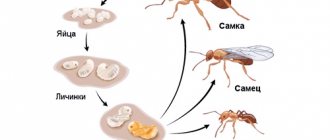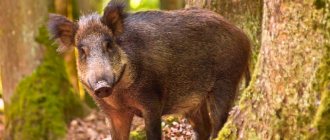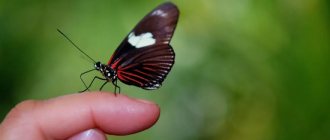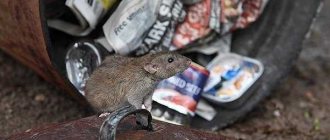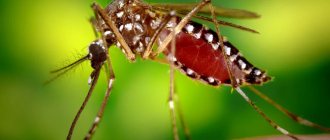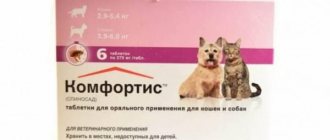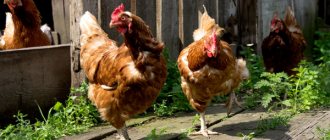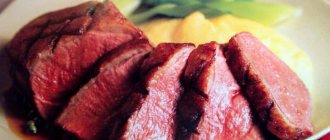- home
- Chinchilla
- Health
04/07/2019 Chinchillas are quite popular rodents for home keeping. You can keep chinchillas both in a house and in an apartment. These funny and cute animals are friendly and playful. They are characterized by good health and a long life span. Among all the varieties of rodents suitable for home keeping, it is chinchillas that bear the title of long-livers. This article will discuss how long chinchillas live at home and in the wild, as well as how to determine the age of an animal and how to extend the life of a furry pet.
How many years do chinchillas live?
The possible life span of a chinchilla makes this animal a champion among rodents in terms of longevity. The age limit that the animal can reach is 30 years. It is a rare animal that manages to live much longer. It is unnecessary to emphasize that a rodent reaches such a respectable age only under good home conditions, that is, living in captivity - far from dangers and threats.
In its natural environment, the furry rodent does not live very long - about 10 years. By chinchilla standards, this is a short period of time, but for most rodents this age is unattainable, especially in natural conditions.
Life in nature
Determining exactly how long chinchillas live in their natural environment is problematic. These fluffy “balls” in the wild represent prey for predators. They are attacked by:
- wild felines;
- foxes;
- owls;
- other predatory fauna.
Of course, such a number of enemies does not contribute to the longevity of small rodents. The favorite habitats of chinchillas are mountainous and rocky areas, sparse in vegetation and with a lack of accessible shelters. And although the nimble little animals have adapted to hide from enemies between the stones (fortunately, the discreet color of the fur coat and the small dimensions of the body make it possible), it is not always possible to escape in this way.
On average, non-domesticated chinchillas live up to 8-10 years. A rare rodent living in the wild manages to overcome the 12-year mark. By this age, the animals are already becoming old. They are no longer so nimble, their sensitivity decreases, their sense of smell and hearing are dulled. These age-related changes make rodents easy prey.
Another factor that shortens the life of free rodents is disease. In nature, there is no one to treat animals, so even simple infections lead to death.
Home conditions
As already noted, with good care at home, chinchillas can live for decades. Long life is facilitated by the absence of predators, the availability of plenty of food and, of course, the care and love of the owner. The average lifespan of a furry pet rodent is 15-25 years. But, of course, improper care, as well as unsuitable living conditions, shorten this period.
As for the minimum value for how long a chinchilla lives in captivity, it is difficult to determine - it all depends on the care and maintenance of the rodent.
Population and species status
Today we can say with confidence that these animals are facing complete extinction. This mainly concerns the chinchilla population in the wild. According to experts, over the past 15 years the total number of these animals has decreased by almost 90 percent.
In 2022, scientists knew of only 42 colonies of these creatures living on the South American continent. Scientists also believe that there are so few animals left that population growth is out of the question.
Interesting note: A chinchilla's coat is valued at $20,000, so it's no surprise that these animals are so mercilessly killed. To sew one coat, you need to kill at least a hundred adults.
Sewing similar fur coats in Europe began in the 19th century. During the period 1828-1916. About 7 million skins were exported from Chilean territory, and in total up to 21 million animals were destroyed and exported. The character is such that the hair on the head rises spontaneously. Only in 1898 were laws passed prohibiting hunting and export. Unfortunately, it was already very late, and such bans can no longer reduce the overall number.
Determining the age of a chinchilla
There are several ways to determine how many years or months an animal has already lived.
By weighing
By weighing the animal, you can determine its approximate age using the table below.
| Age in months | 1 | 2 | 3 | 4 | 5 | 7 | 8 | 9 | 10 | 11 | 12 | |
| Weight in grams | 50 | 100-110 | 140-160 | 210-230 | 230-250 | 320-330 | 380-390 | 430-440 | 465-485 | 490-500 | 520-535 | 600-620 |
Of course, the indicated values are approximate, since the animal’s body weight depends not only on its age, but also on feeding and living conditions in general. One thing can be said for sure - if an animal weighs more than 1 kg, it is definitely older than one and a half years.
Visual inspection
Determining the approximate age of an animal is also possible “by eye”.
Young animals are active and restless. They are interested in everything they see around them and try to study every object they discover. Older chinchillas are calm and measured; they usually do not even show interest in new objects.
As for the examination, you can determine the age of the animal:
- by body size - the larger the animal, the older it is;
- along the length of the neck and muzzle - up to six months of age, both the muzzle and the neck of a chinchilla are short, in an animal older than 6 months they are elongated;
- by the shade of the teeth - babies fed on mother's milk have snow-white teeth, but as soon as the animal switches to roughage, its teeth begin to turn red (the richer the orange pigment on the enamel, the older the animal);
- on the paws, or rather, feet.
Paw inspection
Young animals have soft and pink feet. In adult animals, the skin on the feet gradually becomes rougher, and calluses form. The more there are, the older the animal being examined.
Proper care
If you have a chinchilla, be prepared to take care of it. Providing everything your pet needs takes time and money.
For comfortable service this is necessary:
- Clean the cage regularly. Clean the surface every 2-3 days and change bed linen with a damp mop once a week. General cleaning once a month.
- Buy or make a large cage for your chinchillas, as they are very active and need a place to expend their energy. If the cage is narrow, the chinchilla will sit still, which will cause obesity, as well as stress from a boring life.
- Keep your chinchilla calm and quiet. There should be no screaming, no running, no loud music in the room. Animals are very finicky, and if they live in stressful situations for a long time, they can suffer a heart attack or stroke.
- Don't swim in the water. Chinchillas do not wash themselves; they clean their fur in a float with special sand. If you don't dry your chinchilla after water or wash it in cool water, it will develop hypothermia, which is a very dangerous condition. In addition, swimming in water for chinchillas is a huge stress that spoils the health of the animal.
- House or hammock. Chinchillas can, of course, sleep on a bed, but they are used to sleeping in a house or in a hammock. They love to hide, so it's in their nature. Buy your pet a small house or sew a hammock for him to sleep in, and he will be very grateful.
- Buy a bath bowl or make one yourself. Not only does it clean your chinchilla's coat, but it also relieves the stress of bathing.
How to extend the life of a chinchilla
The lifespan of an animal is primarily influenced by genetics. If you have purchased an animal with DNA abnormalities that arise from the wrong selection of parents during breeding, it is impossible to extend the pet’s life even with perfect care. Therefore, in order for the animal to delight you with its company for a long time, you need to purchase chinchillas only from nurseries with an already established good reputation.
If everything is in order with the animal’s genetics, its longevity can be ensured by observing the conditions of detention and careful care.
A short list of rules, the observance of which will prolong the life of a small pet:
- Providing the animal with spacious housing. The best option is a cage with a width of 1 m.
- Thoroughly clean the cage once a week.
- Creating and maintaining an optimal microclimate.
- Organizing regular walks for the animal outside the cage.
- Ensuring proper nutrition.
- Monitoring the physical condition of the animal and regular examinations. If you notice any deviations from the normal state (for example, nasal discharge and heavy breathing, hair loss and weight changes, lethargic behavior, etc.), you should immediately contact your veterinarian.
Monitor your health
Diseases in chinchillas are mostly typical and if treated in the first stages, they do not pose any danger to life. It is necessary to constantly examine the chinchilla, weigh it and look at its activity. If the chinchilla becomes lethargic, drinks and eats less, then it is sick with something.
Common diseases of chinchillas
- Digestive diseases
- Teeth grow incorrectly, hooks form
- Metabolic disease
- Hypothermia or overheating
Most often, chinchillas die when the owners do not attach importance to diseases and believe that diarrhea or bloating will go away on its own. As a result, the chinchilla gets worse every day and if urgent measures are not taken, it will die.
Home treatment is most often done to save money, but without experience, it can only cause harm. Therefore, do not risk your animal and contact a veterinarian, who will usually make a diagnosis and prescribe treatment in one visit, which you can continue on your own.
Injuries
Getting injured in a cage is very difficult and extremely rare. Typically, chinchillas are injured due to human fault when they are allowed to walk around the apartment unattended or given to children to play with, who with careless movements and squeezing can accidentally break the bones of a fragile animal.
To avoid injury, you do not need to pick up the animal without its desire, i.e. Until you tame him, don't touch him. He will try with all his might to escape from your hands.
A chinchilla can get injured in a cage if it is very narrow. The animal loves to run and climb obstacles, and in a small cage it will constantly hit objects. It is also necessary to securely secure all ladders, shelves and hammocks so that chinchillas do not have the opportunity to fall and injure themselves.
Risk factors
Preventing illness and injury to your pet is easier than treating it for existing health problems. Therefore, an owner who takes a responsible approach to keeping a furry animal needs to study in advance the factors that can shorten the animal’s lifespan in order to prevent their occurrence.
Obesity
Domestic chinchillas move little, which affects their digestion. The result is a predisposition to obesity.
The animal's diet must be balanced. It is important to control not only the composition of the diet, but also the amount of food consumed. Even if the animal has just eaten to its fullest, it still will not refuse any offered treat. Therefore, the responsibility for ensuring that the pet consumes the optimal amount of food lies entirely with the owner. It is worth noting that fasting is more harmless for animals than overeating.
To prevent obesity, it is important not only to control the amount of food the animal eats, but also to provide the pet with physical activity - let him out of the cage to walk around the house, install sports equipment for training in his home, etc.
Digestive system disorders
Problems in the gastrointestinal tract of a chinchilla are usually caused by the animal consuming spoiled or simply low-quality food. A clear symptom of digestive problems in an animal is an upset stomach. Also, by the behavior of the pet or by palpating its tummy, you can identify the discomfort it is experiencing, which also serves as a sign of gastrointestinal disorders.
It is not difficult to prevent this problem - you need to carefully inspect all products before serving them “to the table” of the rodent. Stale, spoiled, etc. products are prohibited from being served.
Injuries
Chinchillas usually receive injuries of various types while walking - if they are left to their own devices. Therefore, while walking your pet outside the cage, you should not allow it to disappear from sight even for a short time. Continuous control over the released rodent is necessary. Otherwise, this walk may be the last for the animal.
You should not allow a chinchilla to chew on anything while walking - the animal can get poisoned (if synthetic material or a toxic substance gets on the tooth) or receive an electric shock (if it is wires). It is also important to exclude the possibility of the animal coming into contact with all hot and sharp objects.
Other causes of injury include:
- Fights (if a pet lives in a cage not alone, but with a relative, neighbors can fight among themselves, causing injury to each other).
- Incorrect covering of the floor of the house (the bottom of the cage should not be smooth - the chinchilla will slip and damage its paw; it is necessary to sprinkle sawdust from deciduous trees on the floor of the pet’s house).
Poisoning
Poisoning in an animal can be chronic or acute. The first is due to the entry of toxic substances into the animal’s body on a systematic basis. Toxins have a detrimental effect on the internal organs of the rodent, but may not manifest symptoms in any way.
In acute poisoning, the pet’s condition worsens within a few hours after the toxic substance enters its body. The animal weakens, feels sick, swells, etc.
The animal can be poisoned from anything related to chemistry. Therefore, when cleaning the cage, it is recommended to do without detergents and chemicals. Do not allow your pet to come into contact with pine needles and indoor plants. You should also not give your animal tap water - only boiled or filtered water.
Exhaustion and stress
The low content of nutrients in food causes the occurrence of various diseases in rodents. Therefore, a chinchilla’s diet should not only be balanced, but also rich in vitamins.
Particular emphasis should be placed on nutritional benefits when creating a menu for a pregnant or recently given birth chinchilla. It is important to observe the permissible frequency of reproduction of animals - a maximum of twice a year. Otherwise, the female is in danger of exhaustion.
In addition, you should always protect your pet from any stress - including noise and excessive squeezing.
Colds and hyperthermia
Providing an optimal microclimate is an essential part of caring for your pet. A chinchilla can catch a cold from a draft. A sick animal's temperature rises and a runny nose appears. Colds in chinchillas are often accompanied by complications.
An excessively warm atmosphere is no less harmful to the animal than cold and drafts. Chinchillas easily get hyperthermia or heatstroke. Its characteristic symptoms:
- molting;
- dyspnea;
- redness of the ears and increased temperature;
- weakness.
It is important to remember that the animal has a good fur coat, so the heat is destructive for it.
Optimal microclimate parameters for keeping a chinchilla:
- temperature +18-22°C;
- humidity 40-65%.
The chinchilla's cage should be placed away from heat sources and direct sunlight, as well as from fans and air conditioners.
Malocclusion
The growth of the animal's teeth does not stop. To avoid the formation of excess length, which will injure the chinchilla’s mouth and interfere with normal feeding, it is necessary to grind them off in a timely manner. The animal will do this on its own - you just need to provide it with a mineral stone, branches of deciduous trees, bark and roughage.
Nutrition
Probably the most important guarantee of a pet's longevity. It is quite difficult to create a balanced diet for your pet on your own, so it is better to buy ready-made food. A chinchilla's diet must include fresh hay every day. As a treat, you can offer dried fruits from berries, pears or apples. It is very important that salt stones are always available. Naturally, all this should be bought only in trusted pharmacies or pet stores. Do not change food suddenly, this can lead to digestive upset, and this is very dangerous!
